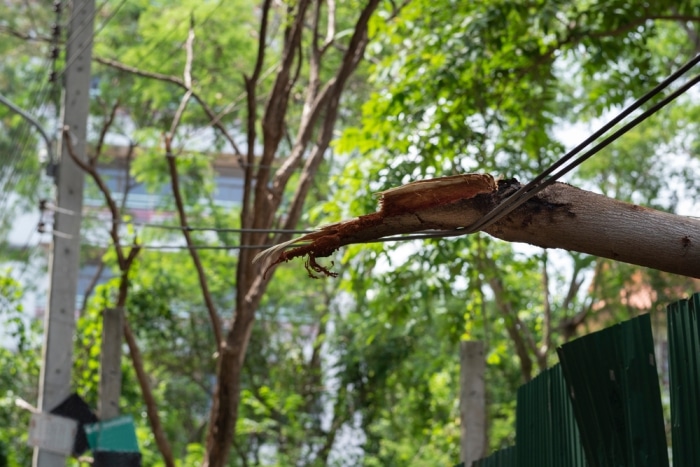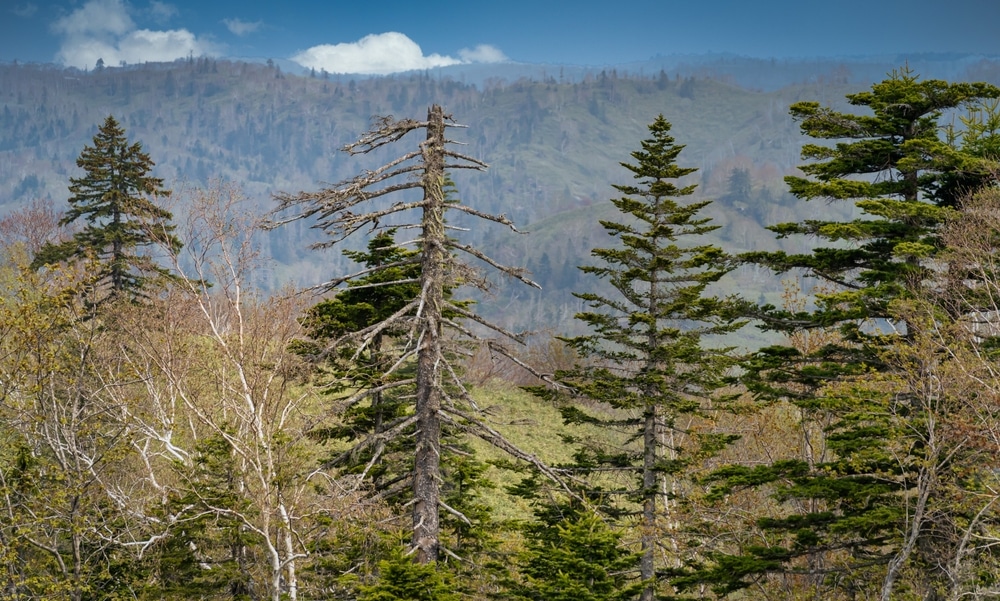Healthy trees are valuable. They produce oxygen and offer shelter for local wildlife. They provide shade and make your property more attractive.
However, there are times when a tree needs to be removed from your property. It’s often in your best interests to remove a dead tree, deeply diseased tree, or severely damaged tree.
Let’s take a closer look at when to cut down a tree, and the signs that show us a tree needs to be removed.
Why & When to Cut Down a Tree On Your Land
You should have a clear goal in mind if you choose to remove a tree. Let’s explore some good reasons to do so:
A Major Safety Risk
Storm damage, severe disease, and other issues can damage trees to the point where they can’t be trusted to remain standing on their own. A falling tree could cause serious and costly injuries to you or your family, as well as damage to your property. It may even fall and damage nearby power lines or other healthy trees. Emergency tree removal can restore safety and deliver you the peace of mind you deserve.
You need to consider the liability issues of a tree falling and harming a guest, neighbor (or a neighbor’s home), or someone simply passing by. Removing a dead or dying tree can reduce those kinds of risks, too.
An Aesthetic Issue
Even if a dead tree isn’t in a position to harm people or property when it falls, it can still stick out like a sore thumb. A dead or dying tree, on its own or among a group of healthy ones, won’t do much to make your home look attractive or boost your property value.
Even if the only major reason to remove a dead or dying tree is its appearance, that’s a good justification. You just want to make sure that the tree can’t be saved or returned to normal with other kinds of tree care and services.
Over Competition
An area densely packed with trees can create too much competition for available resources. In turn, that can lead to weakened trees that are more vulnerable to things like disease and insect pests. Removing some trees can reduce competition, helping the remaining trees thrive.

Do You Need Permission to Cut Down a Tree on Your Land?
Within our service area, some municipalities require a permit for tree removal (and for replanting to replace a removed tree as well, in some cases). The City of Portland, for example, has detailed guidelines for when a permit is required and when a new tree must be planted.
It’s always a good idea to get in touch with local officials to make sure you cover your bases. Still, have questions? We can help! Just give us a call or send us a message.
Clear Signs a Tree Needs to Be Cut Down
Removing a tree isn’t a decision to take lightly. You should consider all of your options because of the many benefits trees provide.
Working with a certified arborist can help you identify other options to address a problem related to a tree. They could potentially remove dead branches instead of the entire tree, if the trunk and tree root system are still viable. A tree expert could also use tree pruning to guide the growth of a tree or remove a branch that’s too close to your home or blocking your walkway.
With the need to consider options besides full removal in mind, let’s look at some signs a tree needs to be removed:
- Widespread and pervasive poor health: A few damaged tree branches can likely be removed without taking more drastic action. However, severe damage across a majority of a tree means it’s probably not viable in the long term. Removal is often the best option.
- Extensive crown dieback: A lack of growth and an abundance of dead branches and twigs at the top of your tree can indicate crown dieback. Crown dieback (and its causes, like stress or root damage) can be addressed. However, extensive dieback can indicate an irreversible problem.
- Noticeable lean: A leaning tree isn’t a healthy tree. You may need to work with a professional tree removal service to address the problem before the tree falls.
- Many dead and dying branches: This is likely a sign of a widespread and serious problem within your tree.
- Severe tree trunk damage: It’s not easy for trees to shrug off serious damage to their trunk. The University of Maryland’s Extension program points to warning signs like vertical cracks, seams, hollow trunks, and large wounds.
Expert Removal for Trees Large and Small
Monkeyman’s Tree Service has been performing residential and commercial tree removals for over 30 years. We offer a tree removal service you can trust!
